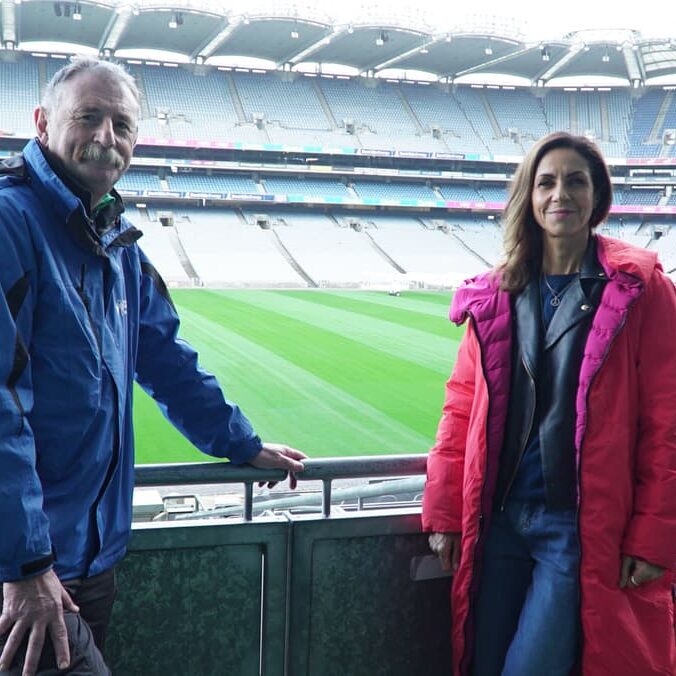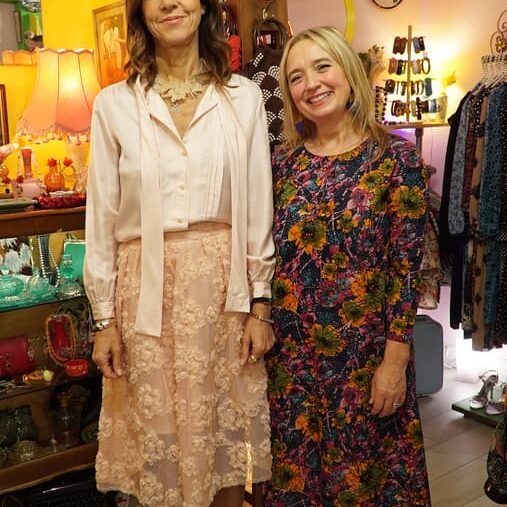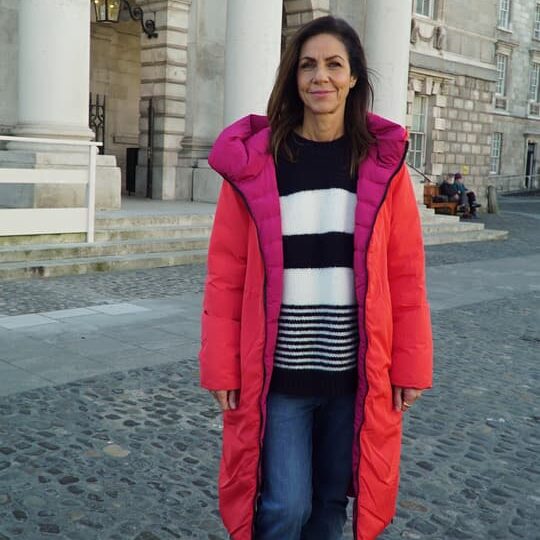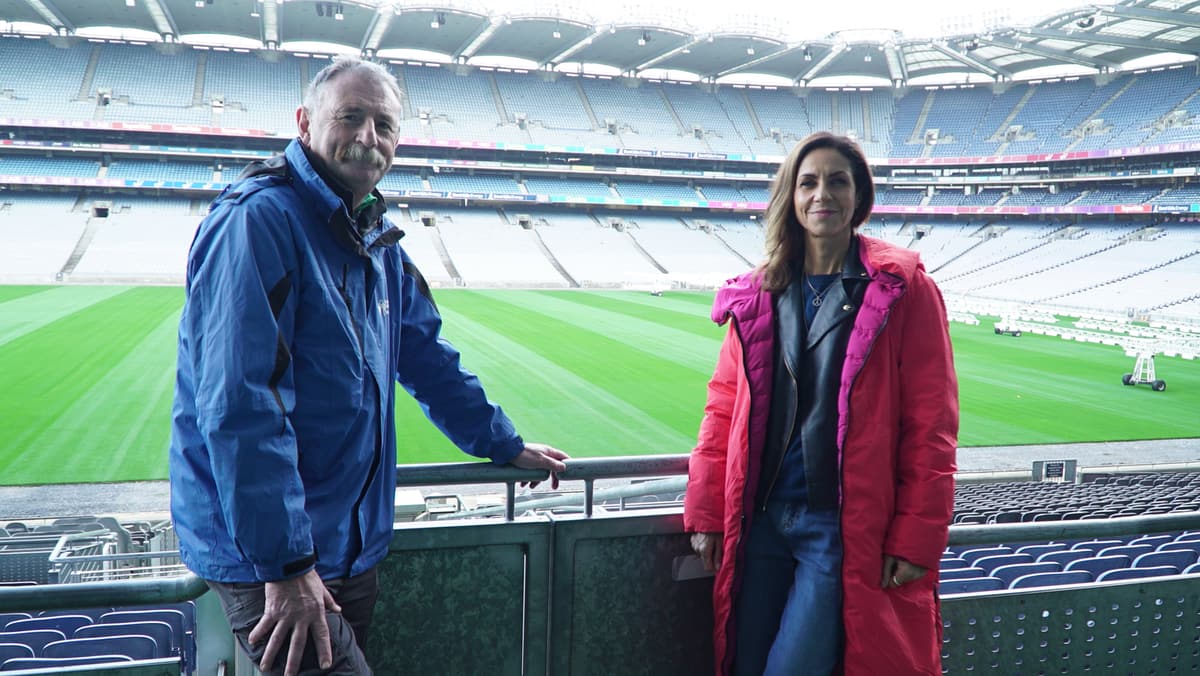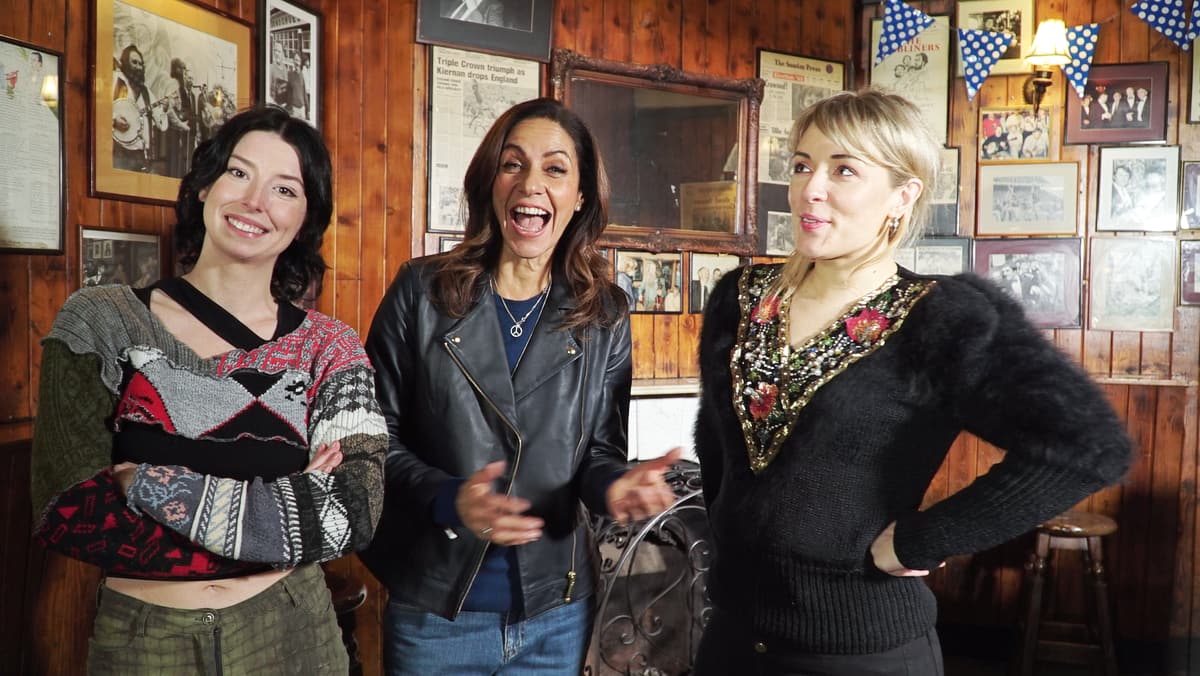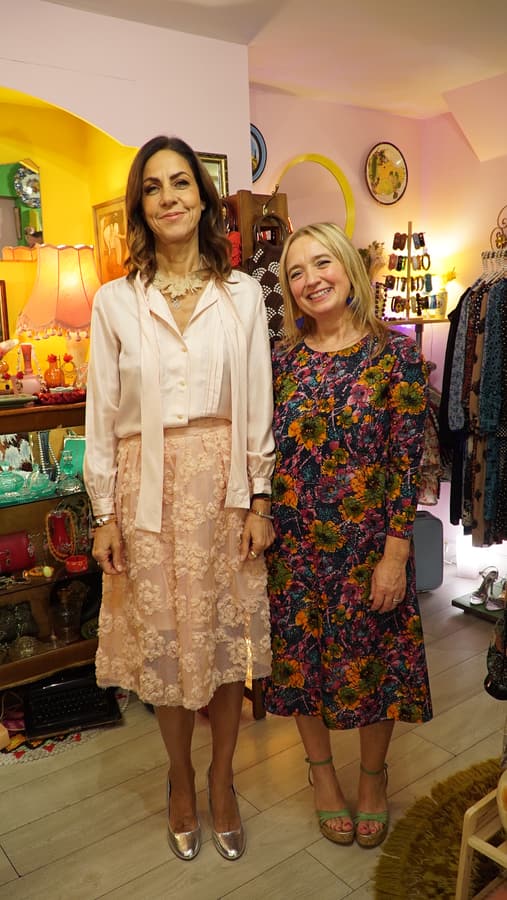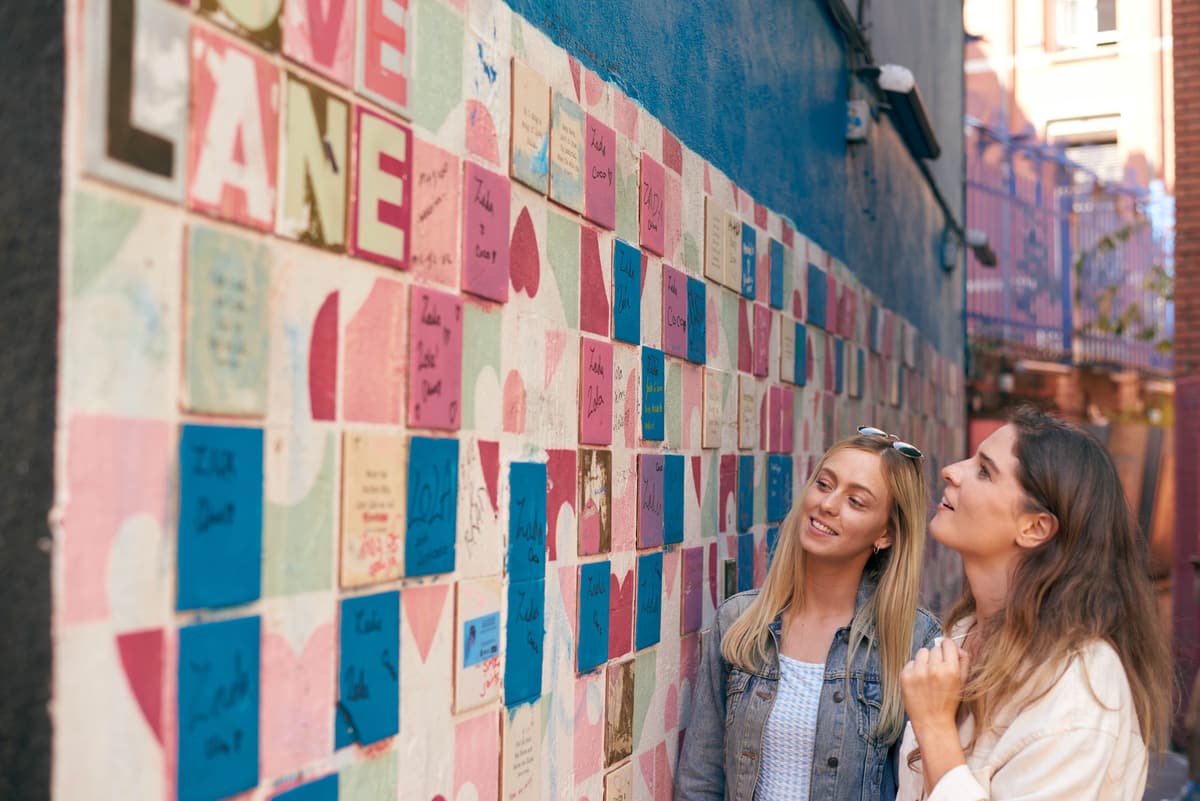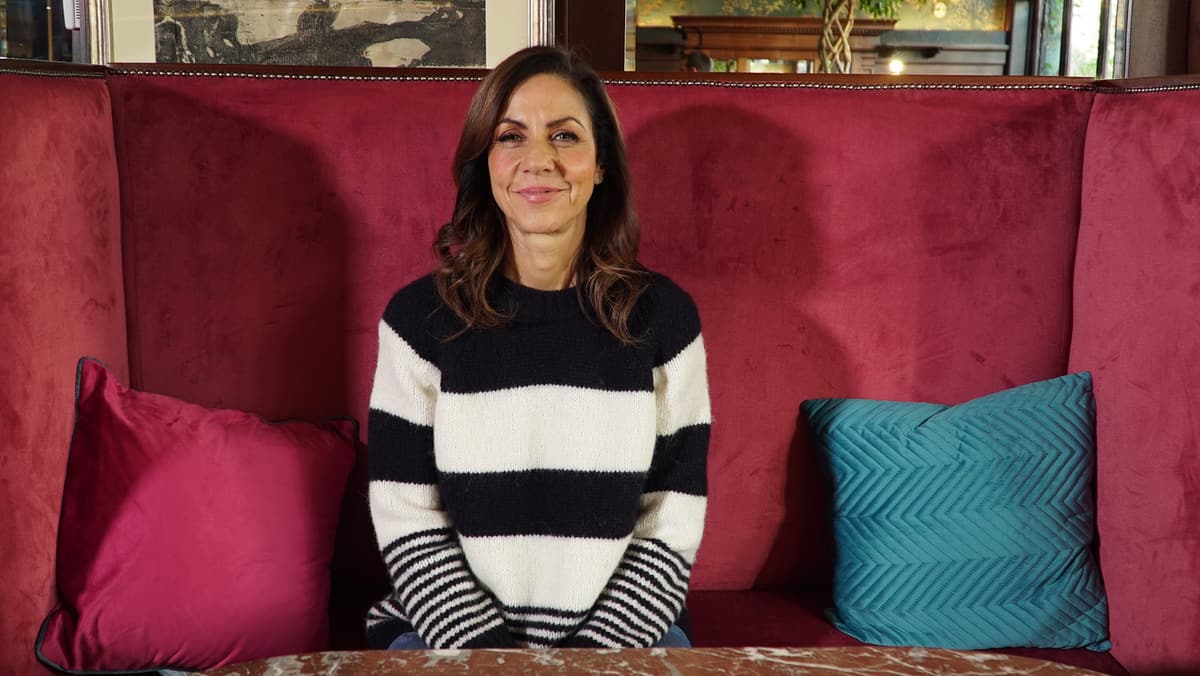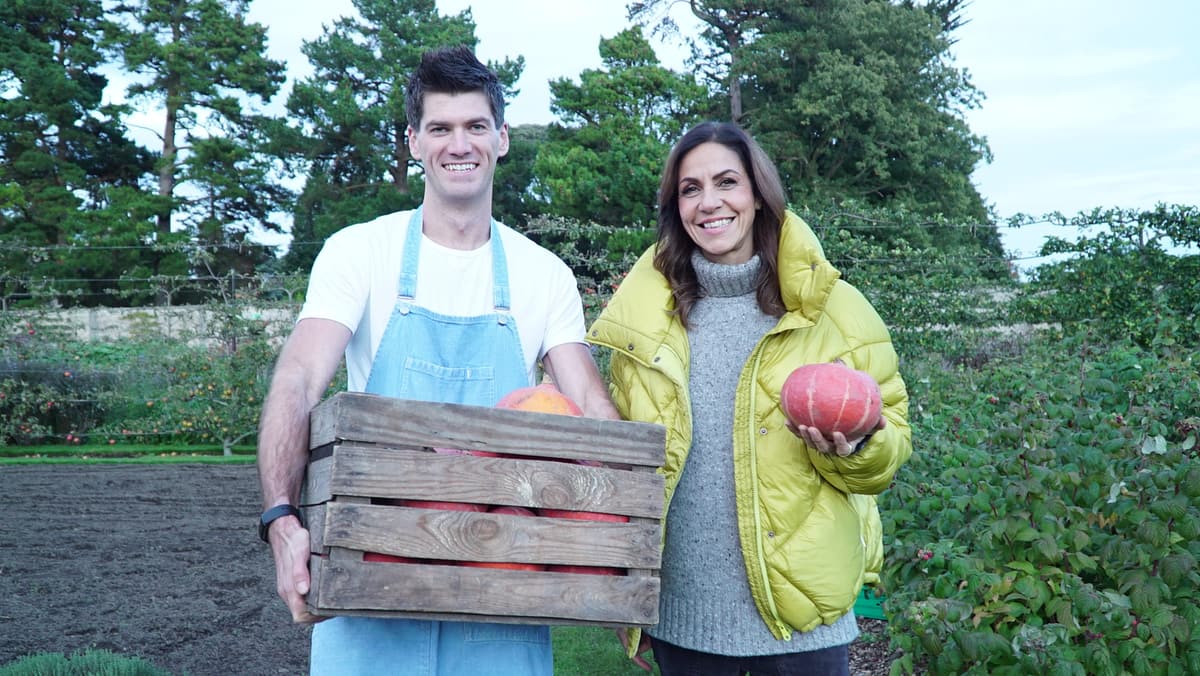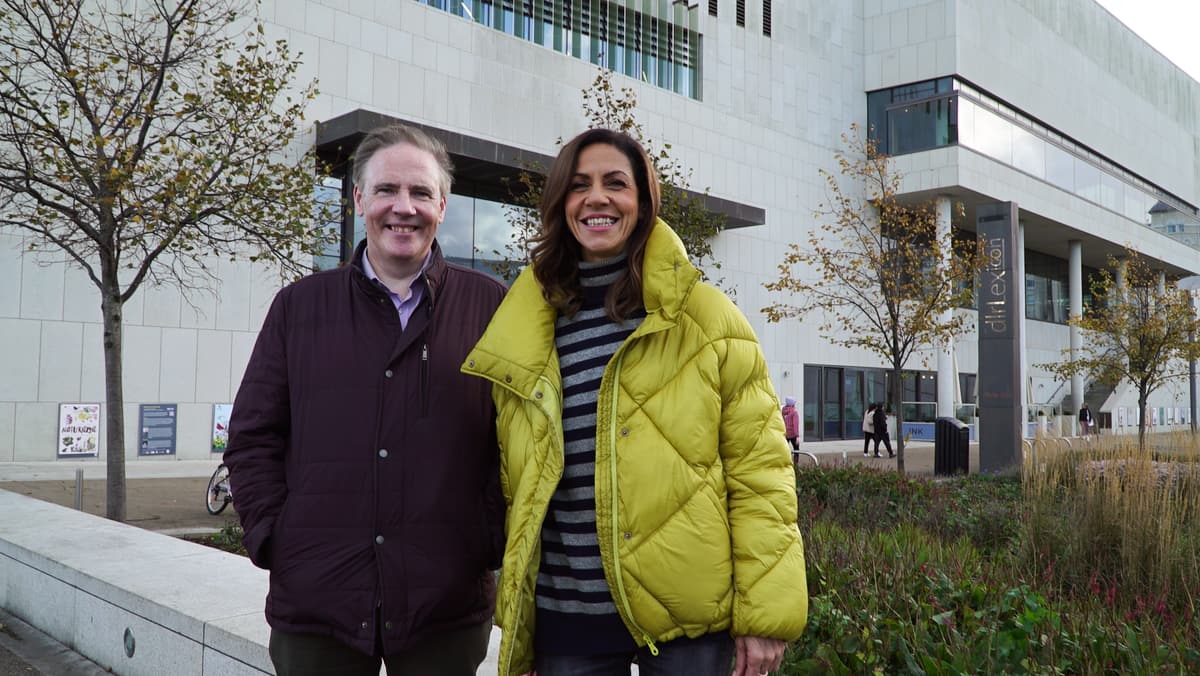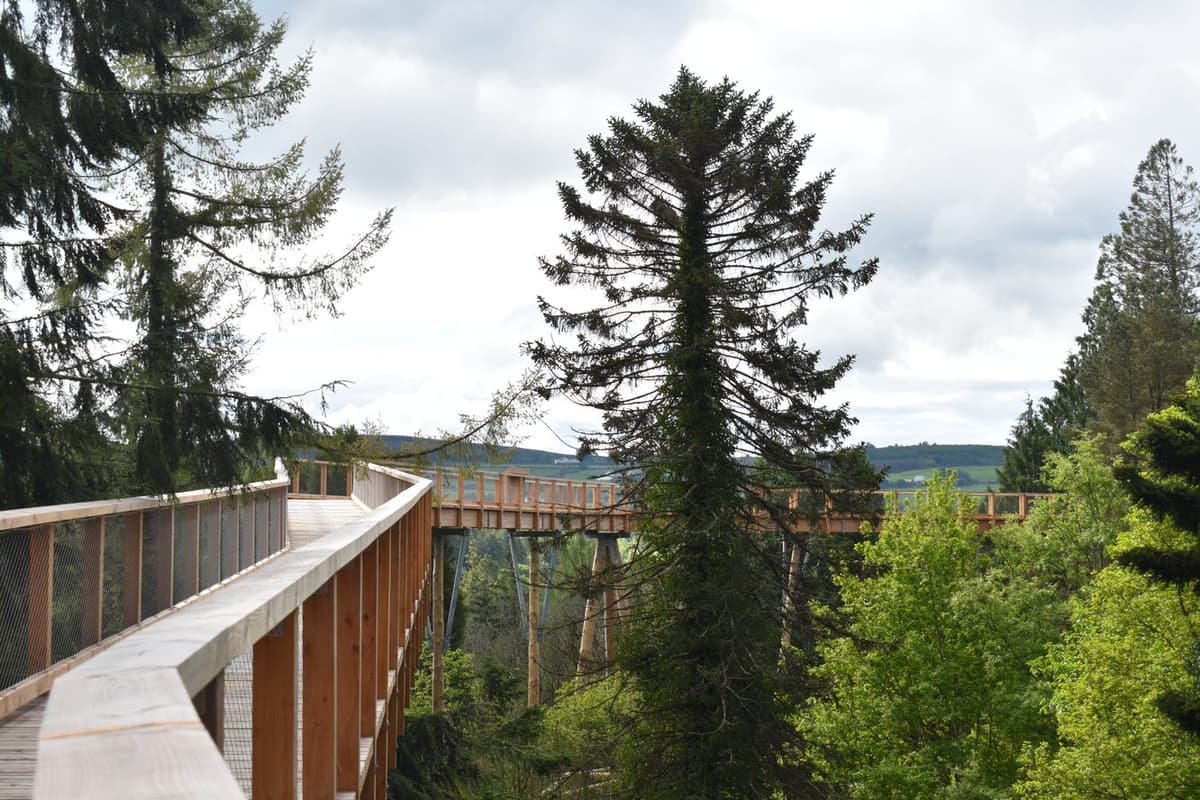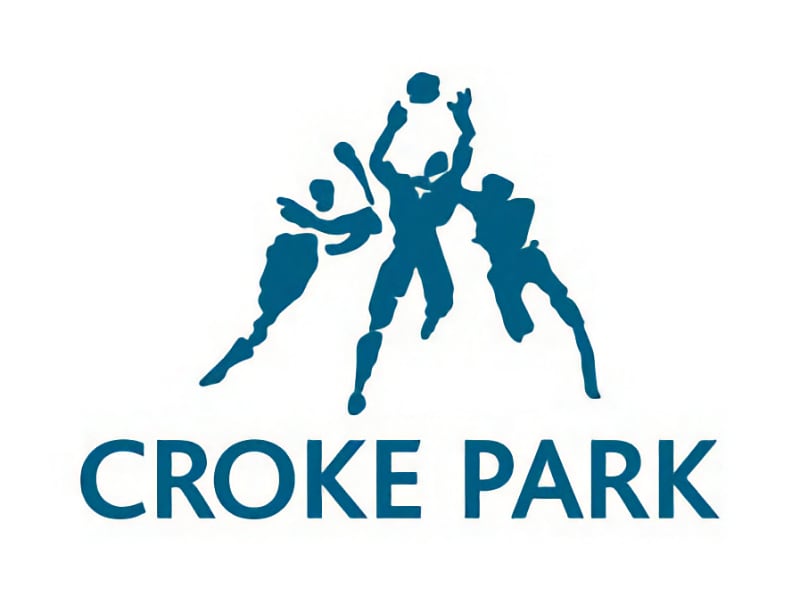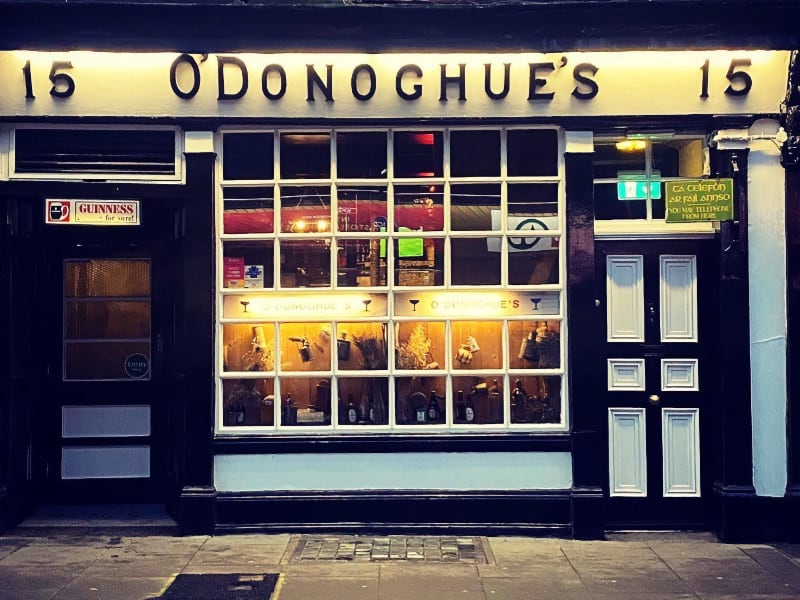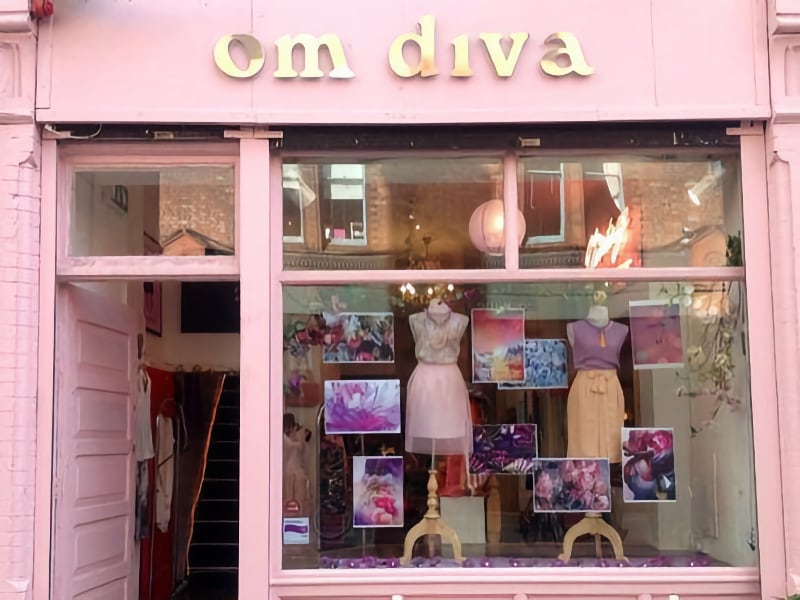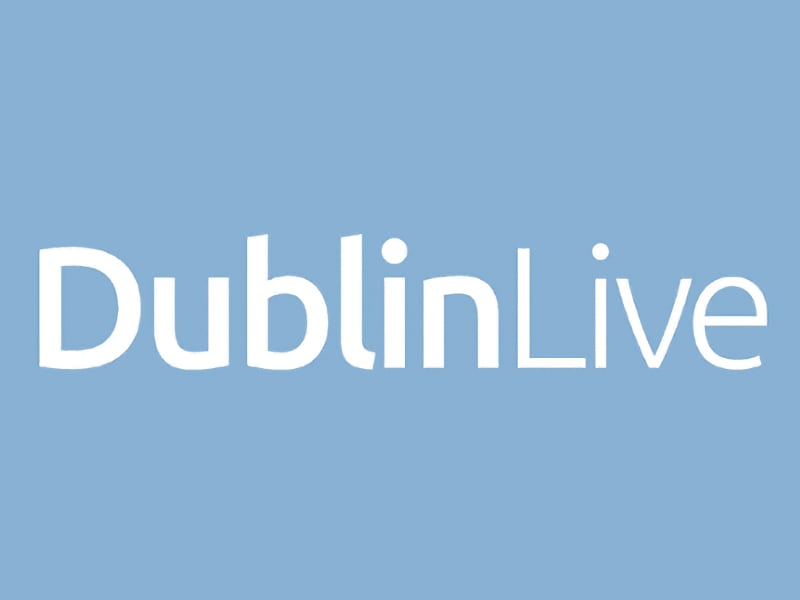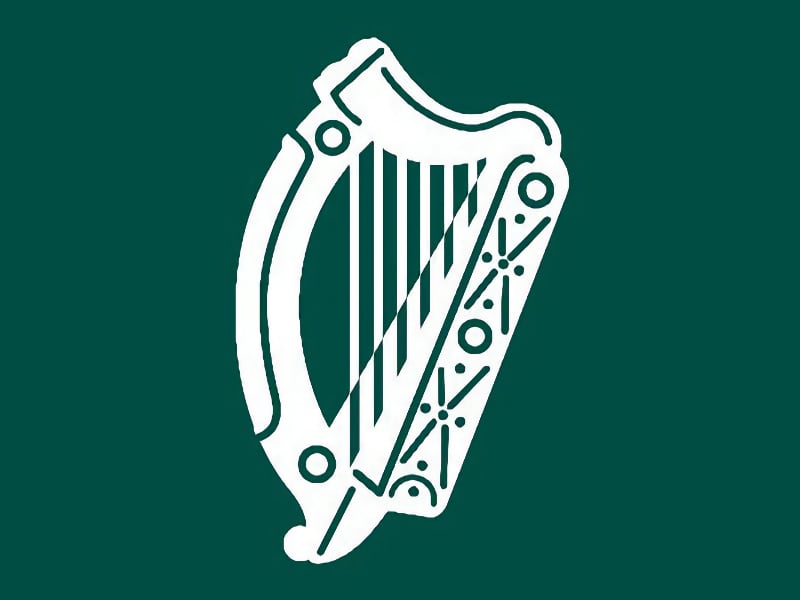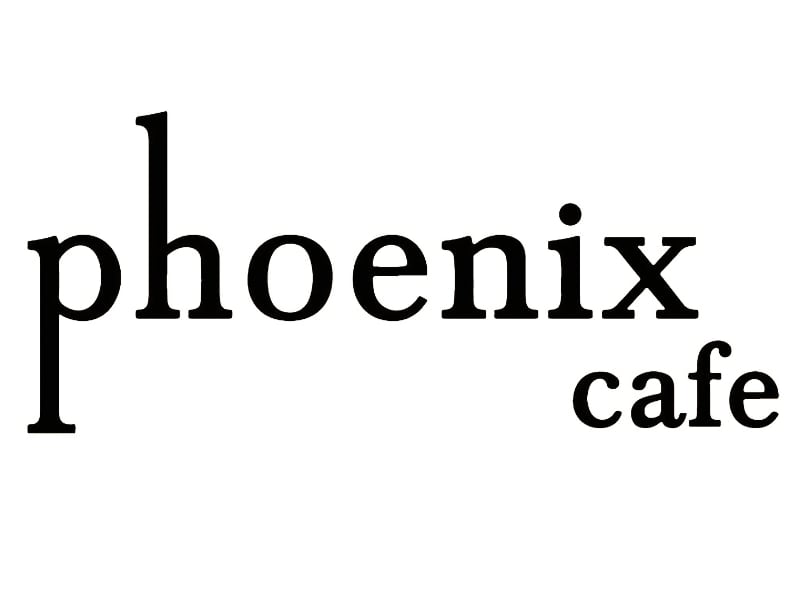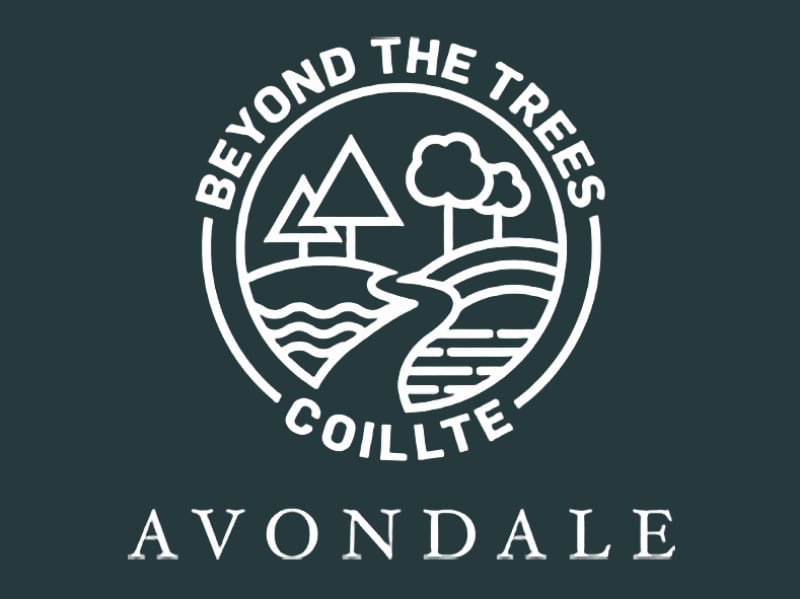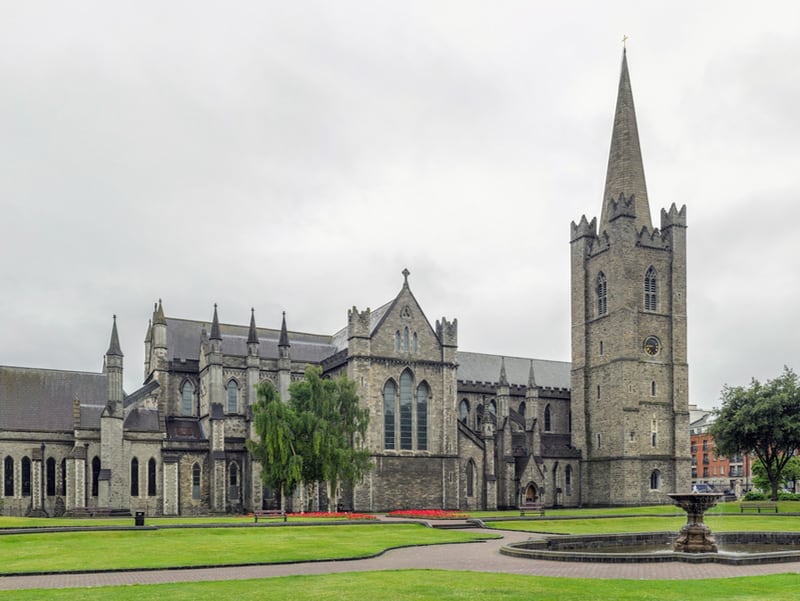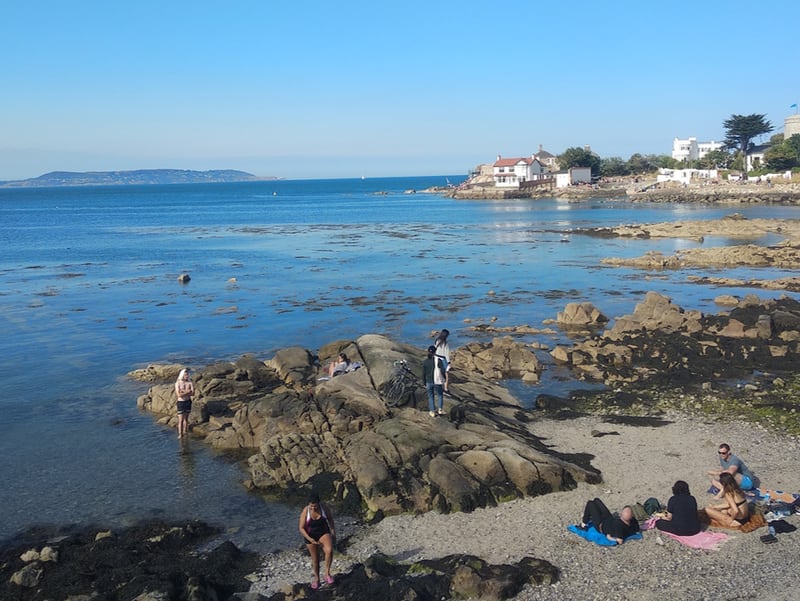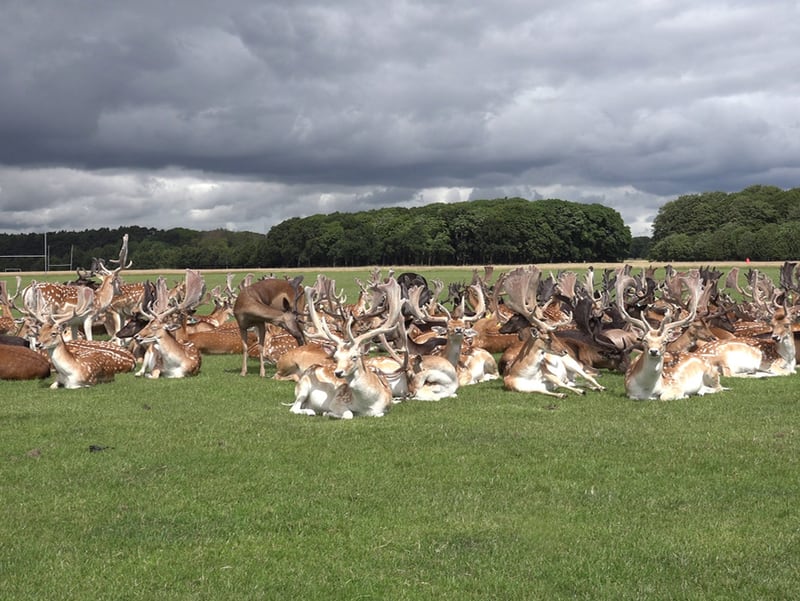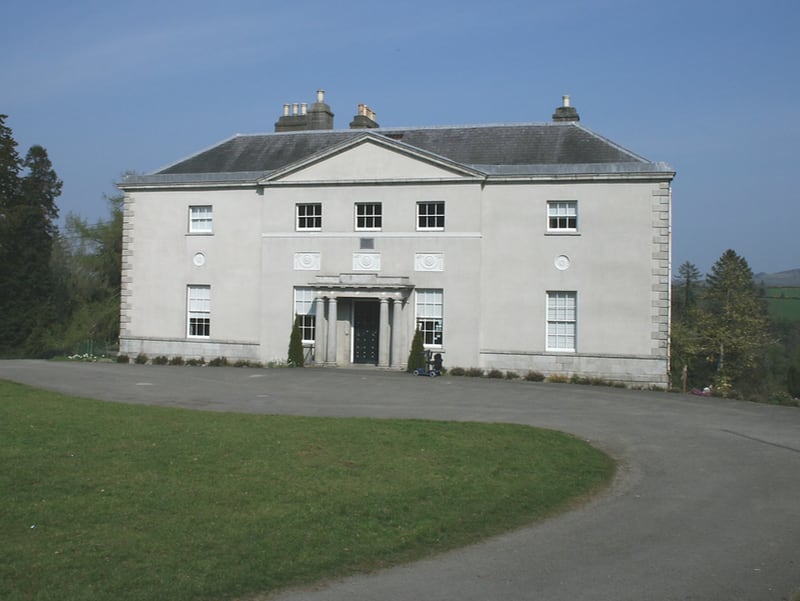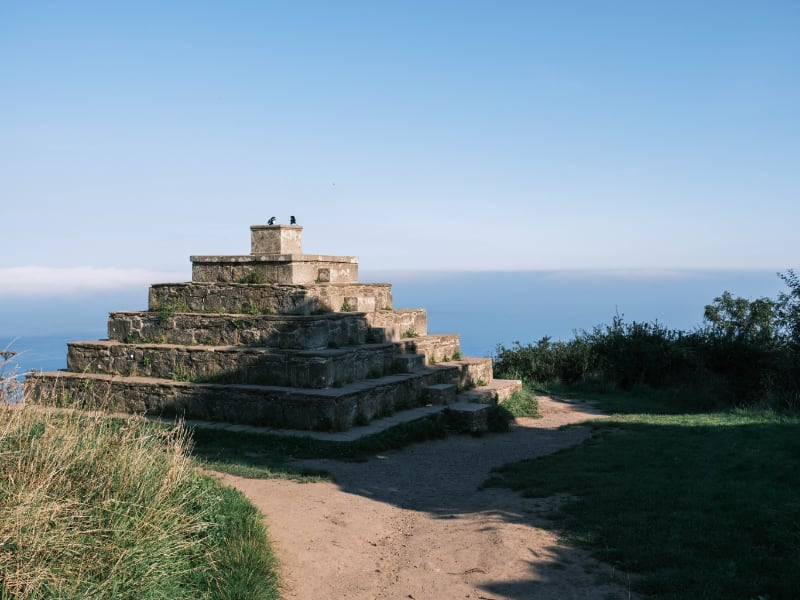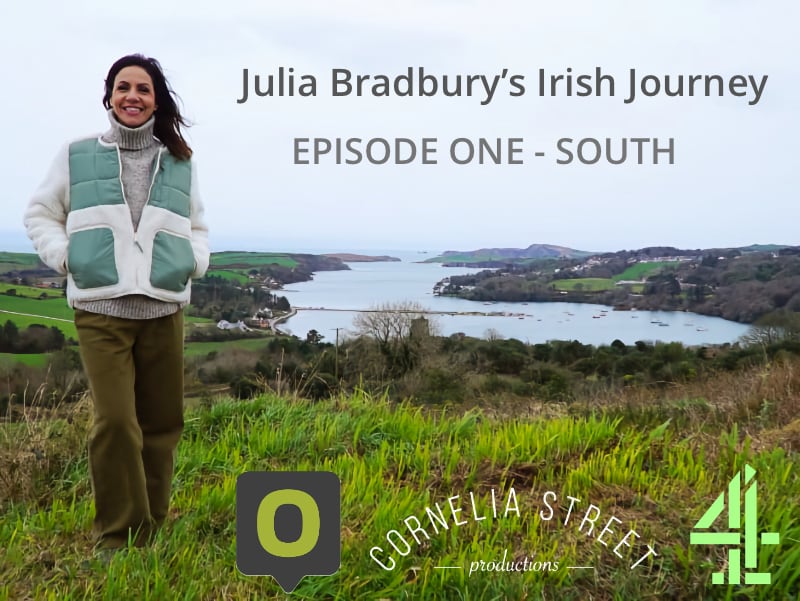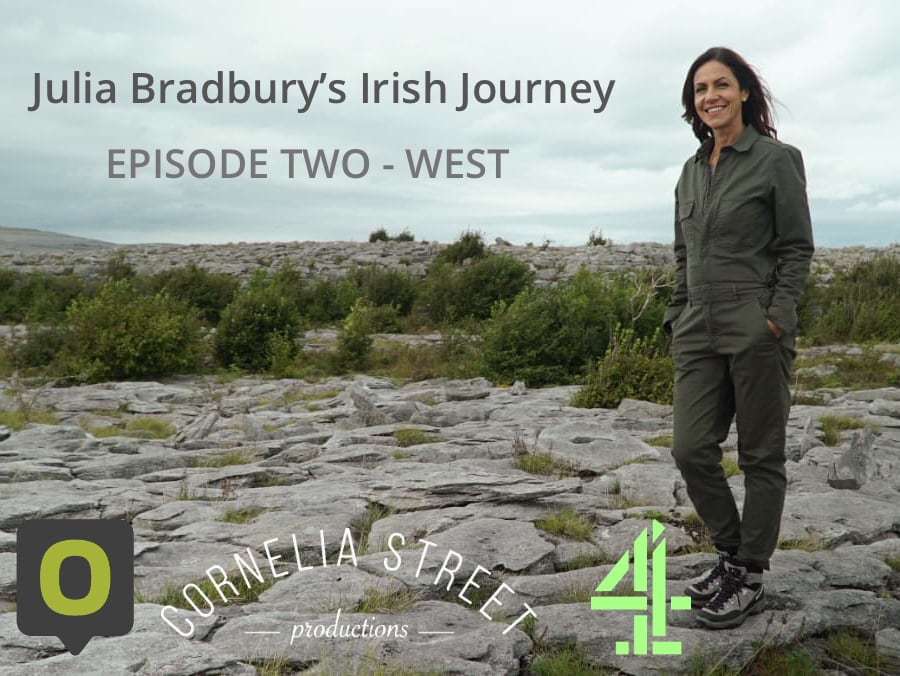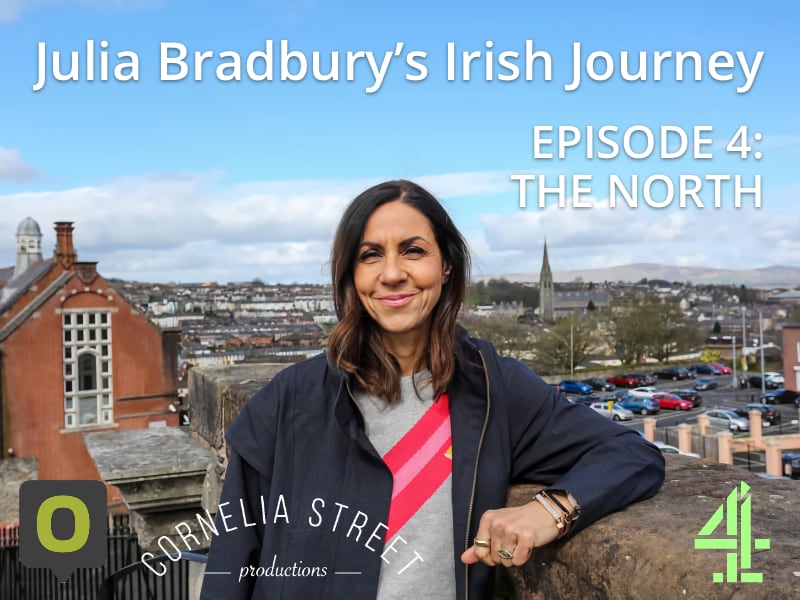In Dublin’s fair city … where girls are so pretty … we first set our eyes on sweet little Julia Bradbury … as this is the city of her birth. And it’s where we’re going to explore in episode 3 of Julia Bradbury’s Irish Journey.
Julia on location filming Julia Bradbury’s Irish journey …
Dublin is more than just the capital city of Ireland – it’s the capital of an idea, and that idea is Irishness itself. The city epitomises what it is to be Irish and our tour really highlights this. Especially where we start – at the hallowed ground of Croke Park.
Home of the GAA (Gaelic Athletic Association) – it’s more than just being about sport. This is about protecting the culture and language too. It could almost be described as a religion. It’s very much part of the Irish DNA.
Croke Park was the scene of the Bloody Sunday massacre of 1920 when the Irish Republican Army began an operation to assassinate a group of undercover British Intelligence Agents in Dublin. Later that afternoon the British forces raided a Gaelic football match at Croke Park, opening fire on the crowd and players with 14 fatally shot and over 60 more wounded. One of those killed was the Tipperary player, Michael Hogan who now has one of the stands posthumously named in his honour.
James Joyce once suggested that it would be a “good puzzle to cross Dublin without passing a pub”. The pubs in Dublin, as in elsewhere in Ireland, play host to a thriving live music scene of traditional Irish music. O’Donoghue’s on Merrion Row is no exception to this with live music offered 7 days a week. When Julia stopped by she was treated to a performance by Aoife Kelly and Faye O’Rourke.
Once seen as a poor city, Dublin has seen a huge growth in the past twenty years or so. It’s a young city with over half of the population being aged under 30. This has seen a boom in the cafe and restaurant culture. Bread 41 is a bakery that Julia visited where everything is made in house using local ingredients where possible. They specialise in long fermented breads that are handmade over two days. If you’re keen to develop your own skills at breadmaking – you can join them for classes.
The south west of the city has become known as the Creative Quarter of Dublin and is where you can find clothing and crafts from home grown designers. This is certainly the case in Om Diva that has 3 floors plus a basement and mezzanine of incredible items from Irish designers. We particularly love the clothing that has been upcycled by Laoise Carey.
If there’s one place many tourists head for in Dublin it’s Temple Bar. It’s south of River Liffey and is a street packed with pubs and bars. It’s not the place for peace and quiet – but great for the craic! Post pandemic though many bars and restaurants were forced to close. It was already an area of the city that wasn’t the most popular with Dubliners themselves and the council decided to step in and do something to make it more attractive. Anna Duran was commissioned to create Love Lane – an art installation that’s a collection of messages of love from Dubliners alongside pieces of her own work.
Grafton Street is the main shopping street in Dublin. At street level it’s much the same as any other high street with familiar names sitting alongside each other. But if you raise your eyes upwards you can see a hint of Dublin from years gone by with the collection of different styles of architecture from Tudor revival, romanesque, gothic and art deco amongst others.
Along Grafton Street you’ll find Bewley’s Cafe which is an institution in its own right. With beautiful stained glass windows, this cafe has been here for over 100 years and is a place frequented by some of the great Irish writers including James Joyce, WB Yeats and Samuel Beckett. Julia met the novelist Martina Devlin here to talk about the literary greats that have come from Ireland, especially Dublin. Storytelling is in the DNA of the Irish – everyone grows up listening to and telling stories to one another. It’s not something that belongs to the elite but to everyone, no matter their station. And that’s perhaps why Dublin has been, and continues to be, such a hotbed of creativity.
Whilst we love exploring urban environments, there’s nothing quite like getting out into a green space. Phoenix Park, to the west of the city centre, is one of the largest urban parks in Europe. It’s a beautiful deer park that offers great space to walk, run and explore. There’s also a great cafe, the Phoenix Cafe, that very much leads the way on the farm to fork movement as much of the produce it uses comes from a Victorian walled garden next door!
Just south of Dublin, on the coast, is Sandycove. This popular seaside resort offers you the chance to get a good lung full of sea air – and what’s more you can walk there from Dublin (it’s about a 6 mile walk along the coast). Here Julia met with Dr Shane O’Mara, a neuroscientist from Trinity University, Dublin who has written a book on the health benefits, both physical and mental, of walking – something that we know all too well here at The Outdoor Guide! His latest research has shown how walking helps you to cope with the effects of ageing on the brain – just going walking 3 times a week can improve your brain and memory function!
This episode of Julia Bradbury’s Irish Journey ends just south of Dublin in the Wicklow Mountains – the longest continuous mountain range in Ireland. Here she visits the Avondale Estate – home of the Irish Forestry Movement. From a time when just 1% of the land was covered in trees, from here a drive to increase the number of trees for both nature and for wood was started. Walking in the grounds you can see (and hug) trees that are over 300 years old and supporting a huge number of habitats in their own right. There’s also a walkway that takes you up into the tree canopy (at one point you’re 23m above the ground) to experience these magnificent trees from a different perspective.
The importance of green space is a constant message that comes through on our tour of Ireland. It’s essential for the survival of all life on earth.
Related Walks …
Julia Bradbury’s Irish Journey …






